Autumn is the best season for finding mushrooms, and it’s pretty much over for this year. Here are a few new ones I photographed in the wood – not necessarily uncommon, just haven’t yet made it to our fungi gallery.
First, the Common Inkcap (Cuprinus atramentarius)
Grows in association with buried wood. This mushroom has commonly been considered to be edible (but would you want to?) but you’d have to give that glass of wine a miss, as it has an unpleasant reaction with alcohol. Apparently this property has been used as a treatment for alcoholism!
Tricholomopis rutilans is a mushroom with the rather appealing name of Plums and Custard.
It’s an attractive looking mushroom which grows on or around conifer stumps. Unfortunately “plums and custard” only goes as far as its appearance, not its edibility.
This next mushroom is very common in the wood – called the Clouded Agaric or more recently, Clouded Funnel (Clitocybe nebularis)
They can grow in groups or fairy rings.
The following highlights the difficulty in confidently identifying a mushroom.
It looks much like your common or garden supermarket mushroom Agaricus bisporus, which doesn’t grow in the wild, but there are many similar-looking species that do. Since it had been knocked over I took it home so I could look it up in my books. As it aged the cap changed colour and became scaly:
Many Agaricus species change colour when bruised (yellow) or cut (red), but this didn’t do either. I contacted a friendly mushroom expert (* see below) who I’ve asked questions of before and he wasn’t sure either. Eventually we decided it might “just” be a Field Mushroom, Agaricus campestris (which can be quite variable and good to eat) – but then again, it might not be. If it is, then it confirms that the wood is becoming more open, as it typically grows in meadows rather than woodland.
This last one goes by the wonderful name of Dog Vomit Slime Mould (Fuligo septica).
This is not actually a fungi. A slime mould is more like something you might meet in a sci-fi horror movie. The RHS website says:
Slime moulds obtain their food by engulfing bacteria, fungal spores and other tiny pieces of organic material as they move. The plasmodium constantly changes its shape as it creeps along, and is sometimes seen as a white or yellow (but sometimes other colours) slimy ‘sheet’, or a network of strands, on the soil, grass, or stems and lower branches of plants.
You can see the network of strands in the photo. This was actually quite a large mass, and fortunately not moving so fast that I had to run.
* My friendly mushroom expert is Pat O’Reilly who runs the excellent first-nature.com website that has information on fungi that is second to none. I recommend it for help in identifying mushrooms.
Chris

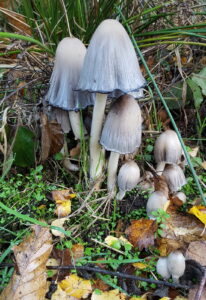
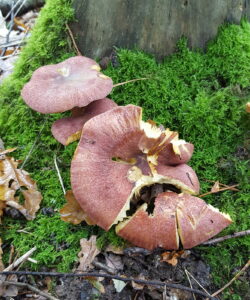
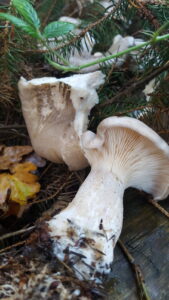
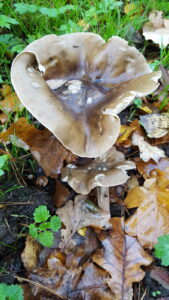
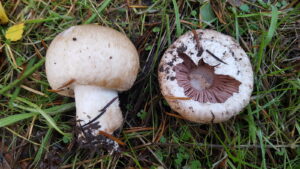
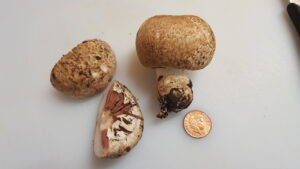
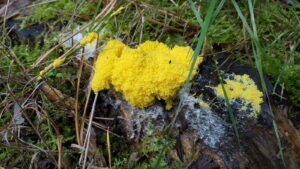
This highlights the fascinating world of fungi during the fall season, including their ecological importance and culinary uses. It’s a great reminder to appreciate the wonders of nature.